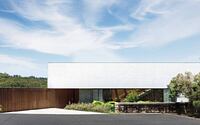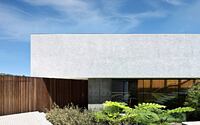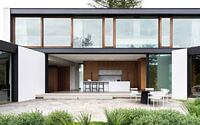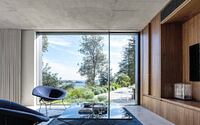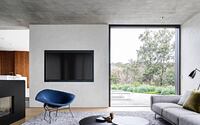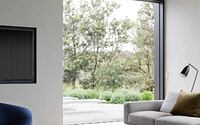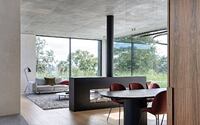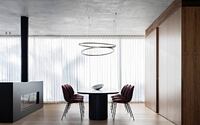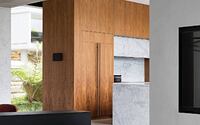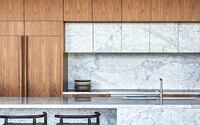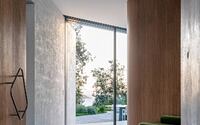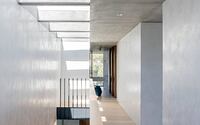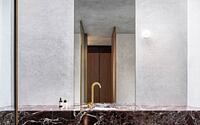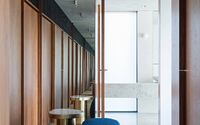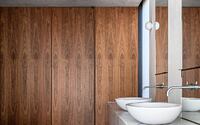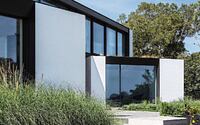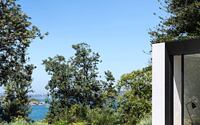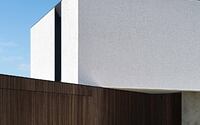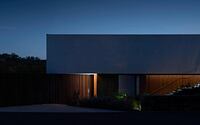Collins Beach House by Tobias Partners
Collins Beach House is a lovely modern house located in Manly, Australia, designed in 2020 by Tobias Partners.



















Description
This home is set on a beautiful, semi-bushland, yet urban site on the edge of the harbour, with two mature Norfolk Pine trees standing guard to the North-West. This incredible location offered a truly unique setting for our client’s house – however the site’s shape and boundaries, significant setback controls and bushfire zoning presented challenges to the design and use of the site.
The site is surrounded by neighbours to the East, North and West but to the South are incredible unbroken views over the coves around Collins beach and the harbour beyond. Whilst framing the views to the South and surrounding bushland, the house also had to ensure privacy from neighbours and simultaneously capture the Northern sun which is impeded by other houses, a steep hill and large existing Pine trees.
With the immediate connections to nature, we wanted the house to feel nestled into this environment throughout every part of the house. It was also essential to frame the many enchanting views, giving every space a well orchestrated connection to the outdoors without feeling exposed to the surrounding neighbours.
Three volumes are positioned at angles to each other, informed by the unusual shape of the site, to capture the views and create several external areas, each with it’s own function. Two of the volumes sit at ground level. The third hovers above the others, leaving a negative space underneath. This negative space houses the central core functions: entry, kitchen and circulation. From this zone, everything else branches out: the garage and rumpus volume to the East cantilevers over native grasses and focuses out to the bush and the harbour; the living volume to the West sits between two garden areas, slightly elevated above a third garden space and focusing out to the harbour beyond. The third volume hovering above has a solid façade on one side protecting it from the overlooking neighbours, with a fully glazed façade on the other to capture expansive views from all of the bedroom and bathroom functions.
The house called for seamless flow between the internal spaces and various external experiences; the bushfire zoning therefore required extensive detailing to integrate fire curtains with the architecture. Blackbutt timber was also employed where possible as a more aesthetically appealing bushfire-rated solution to screening and glazing. The concept of a house intrinsically connected to its natural environment has carried through to the way it is occupied – doors and windows are rarely closed, the boundaries between inside and outside erased. Yet even with this level of transparency between the building and the site, the house retains warmth and a sense of protection.
This site is also home to an abundance of wildlife including a population of bandicoots and the design allows for a significant unobstructed corridor for the bandicoots to pass through without danger or hazards. In addition, all of the planting is native, with many species being common to the immediate area.
The project is one of minimal tolerances and demanding details, the challenges of which were exceeded by the various craftspeople involved in its construction. The integration of rudimentary fire curtains into elegant, sloped steel portals is one example of the intense collaboration required between various contributors to ensure the project’s success. The simple construction methodologies and material palette throughout ensure that the house is an efficient building and timeless home.
Photography by Justin Alexander
Visit Tobias Partners
- by Matt Watts